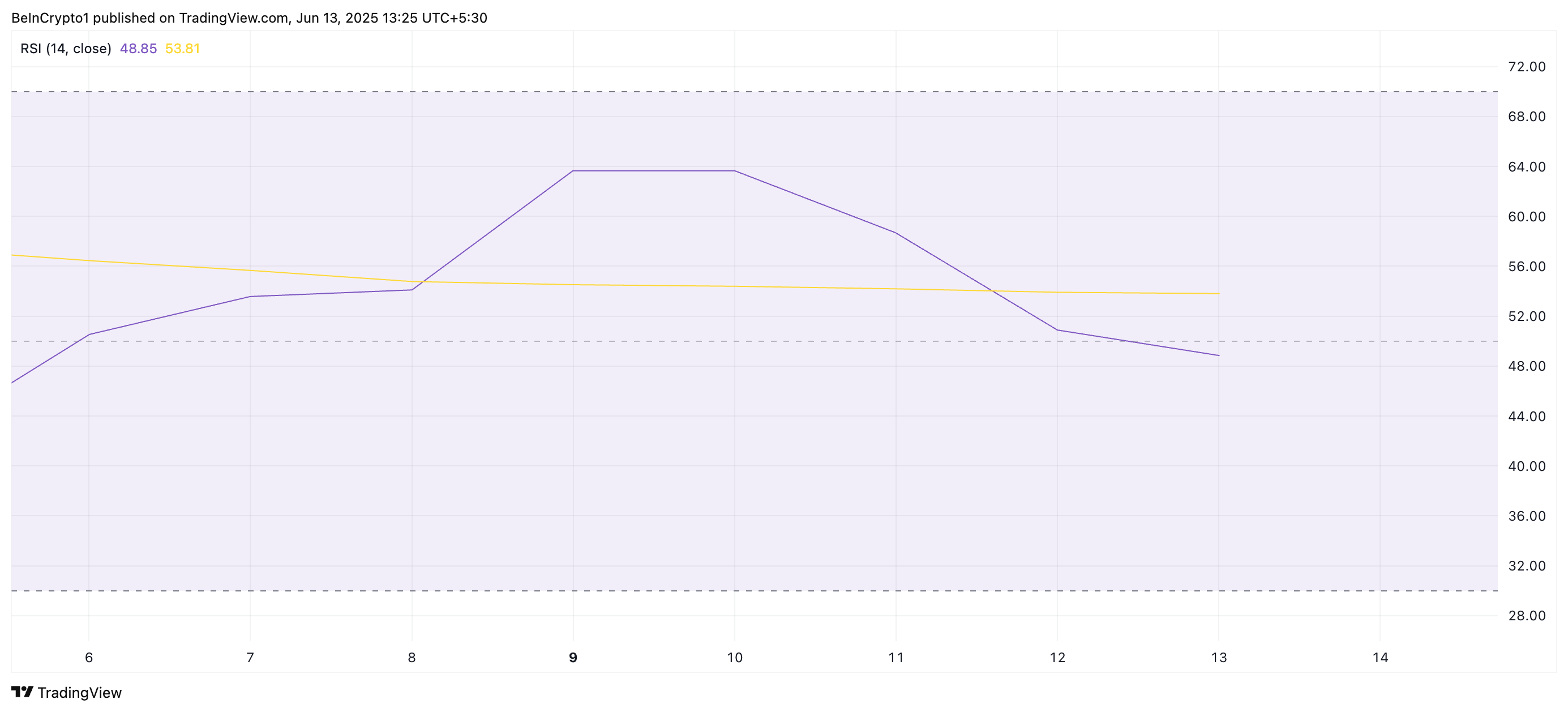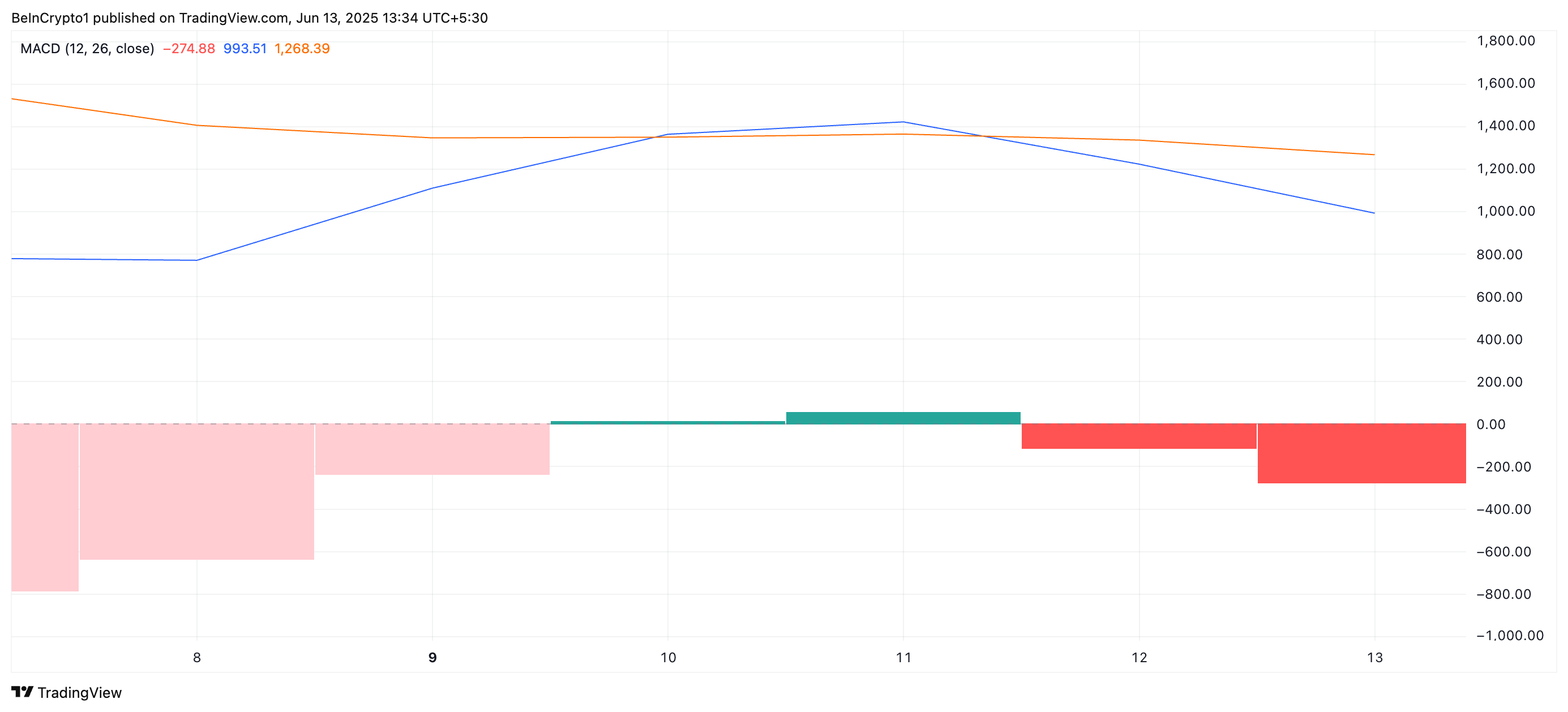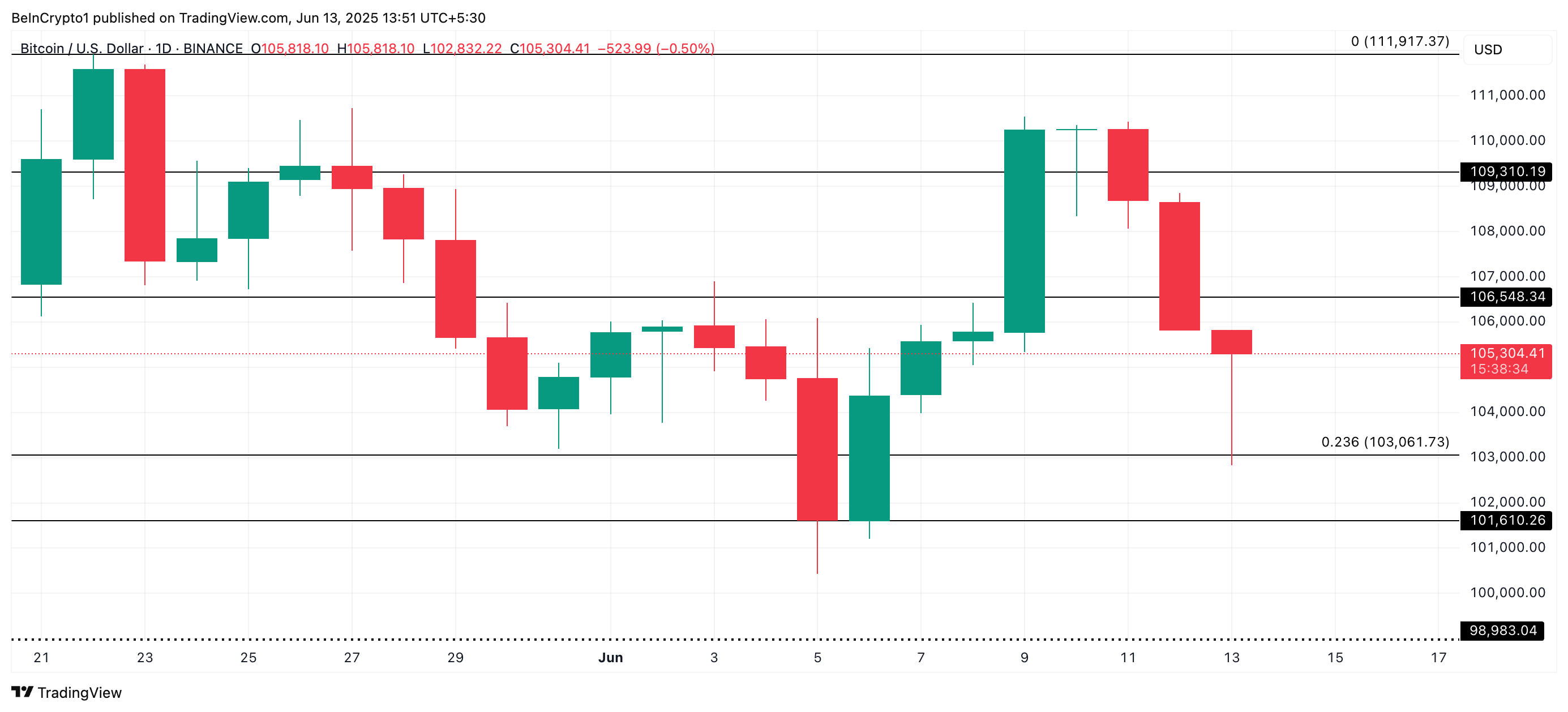| COINOTAG recommends • Exchange signup |
| 💹 Trade with pro tools |
| Fast execution, robust charts, clean risk controls. |
| 👉 Open account → |
| COINOTAG recommends • Exchange signup |
| 🚀 Smooth orders, clear control |
| Advanced order types and market depth in one view. |
| 👉 Create account → |
| COINOTAG recommends • Exchange signup |
| 📈 Clarity in volatile markets |
| Plan entries & exits, manage positions with discipline. |
| 👉 Sign up → |
| COINOTAG recommends • Exchange signup |
| ⚡ Speed, depth, reliability |
| Execute confidently when timing matters. |
| 👉 Open account → |
| COINOTAG recommends • Exchange signup |
| 🧭 A focused workflow for traders |
| Alerts, watchlists, and a repeatable process. |
| 👉 Get started → |
| COINOTAG recommends • Exchange signup |
| ✅ Data‑driven decisions |
| Focus on process—not noise. |
| 👉 Sign up → |
-
Bitcoin (BTC) is experiencing intensified selling pressure amid rising spot outflows, driven by escalating geopolitical tensions in the Middle East.
-
Technical indicators such as the Relative Strength Index (RSI) and Moving Average Convergence Divergence (MACD) reveal declining buying momentum, suggesting a potential continuation of the downward trend.
-
According to COINOTAG sources, BTC is currently trading near $105,000, with key support levels identified around $103,000 that could be tested if bearish sentiment persists.
Bitcoin faces increased selling pressure amid Middle East tensions, with technical indicators signaling further downside risk and support levels near $103,000 in focus.
Bitcoin’s Price Decline Accelerates as Technical Indicators Signal Weakness
Bitcoin has seen a nearly 5% drop over the last 24 hours, trading close to the $105,000 mark as geopolitical uncertainty fuels risk-off sentiment among investors. This has resulted in significant spot market outflows, reflecting a cautious stance from both retail and institutional participants. The Relative Strength Index (RSI) has fallen below the neutral 50 level, currently standing at 48.85, indicating a loss of bullish momentum and increasing probability of further price declines.

The RSI is a critical momentum oscillator that gauges whether an asset is overbought or oversold. Values above 70 typically indicate overbought conditions, often preceding a price correction, while readings below 30 suggest oversold conditions and potential for a rebound. Bitcoin’s current RSI reading reflects a weakening buying interest, signaling that sellers are gaining control.
| COINOTAG recommends • Professional traders group |
| 💎 Join a professional trading community |
| Work with senior traders, research‑backed setups, and risk‑first frameworks. |
| 👉 Join the group → |
| COINOTAG recommends • Professional traders group |
| 📊 Transparent performance, real process |
| Spot strategies with documented months of triple‑digit runs during strong trends; futures plans use defined R:R and sizing. |
| 👉 Get access → |
| COINOTAG recommends • Professional traders group |
| 🧭 Research → Plan → Execute |
| Daily levels, watchlists, and post‑trade reviews to build consistency. |
| 👉 Join now → |
| COINOTAG recommends • Professional traders group |
| 🛡️ Risk comes first |
| Sizing methods, invalidation rules, and R‑multiples baked into every plan. |
| 👉 Start today → |
| COINOTAG recommends • Professional traders group |
| 🧠 Learn the “why” behind each trade |
| Live breakdowns, playbooks, and framework‑first education. |
| 👉 Join the group → |
| COINOTAG recommends • Professional traders group |
| 🚀 Insider • APEX • INNER CIRCLE |
| Choose the depth you need—tools, coaching, and member rooms. |
| 👉 Explore tiers → |
Complementing the RSI, the Moving Average Convergence Divergence (MACD) indicator further underscores the bearish outlook. The MACD line has crossed below its signal line, a classic sell signal that points to increasing downward momentum. This crossover suggests that selling pressure is dominating, which may lead to continued price depreciation in the near term.

| COINOTAG recommends • Exchange signup |
| 📈 Clear interface, precise orders |
| Sharp entries & exits with actionable alerts. |
| 👉 Create free account → |
| COINOTAG recommends • Exchange signup |
| 🧠 Smarter tools. Better decisions. |
| Depth analytics and risk features in one view. |
| 👉 Sign up → |
| COINOTAG recommends • Exchange signup |
| 🎯 Take control of entries & exits |
| Set alerts, define stops, execute consistently. |
| 👉 Open account → |
| COINOTAG recommends • Exchange signup |
| 🛠️ From idea to execution |
| Turn setups into plans with practical order types. |
| 👉 Join now → |
| COINOTAG recommends • Exchange signup |
| 📋 Trade your plan |
| Watchlists and routing that support focus. |
| 👉 Get started → |
| COINOTAG recommends • Exchange signup |
| 📊 Precision without the noise |
| Data‑first workflows for active traders. |
| 👉 Sign up → |
Spot Market Outflows Reflect Growing Risk Aversion
Spot market data reveals a notable increase in Bitcoin outflows, indicating that traders are moving assets off exchanges, possibly to secure holdings or reduce exposure amid market uncertainty. This behavior often precedes heightened volatility and can exacerbate price declines. The geopolitical developments following Israel’s recent strike on Iran have intensified risk aversion, prompting investors to adopt a more defensive posture.
Institutional investors, who typically influence market trends significantly, appear to be reducing their Bitcoin exposure, as evidenced by the outflow patterns. This shift may constrain upward price momentum and prolong the bearish phase unless new catalysts emerge to restore confidence.
| COINOTAG recommends • Traders club |
| ⚡ Futures with discipline |
| Defined R:R, pre‑set invalidation, execution checklists. |
| 👉 Join the club → |
| COINOTAG recommends • Traders club |
| 🎯 Spot strategies that compound |
| Momentum & accumulation frameworks managed with clear risk. |
| 👉 Get access → |
| COINOTAG recommends • Traders club |
| 🏛️ APEX tier for serious traders |
| Deep dives, analyst Q&A, and accountability sprints. |
| 👉 Explore APEX → |
| COINOTAG recommends • Traders club |
| 📈 Real‑time market structure |
| Key levels, liquidity zones, and actionable context. |
| 👉 Join now → |
| COINOTAG recommends • Traders club |
| 🔔 Smart alerts, not noise |
| Context‑rich notifications tied to plans and risk—never hype. |
| 👉 Get access → |
| COINOTAG recommends • Traders club |
| 🤝 Peer review & coaching |
| Hands‑on feedback that sharpens execution and risk control. |
| 👉 Join the club → |
Critical Support Levels and Potential Price Scenarios for Bitcoin
Bitcoin is currently testing crucial support near $103,000, a level that has historically provided a floor during previous corrections. Should this support fail to hold, the next significant level to watch is around $101,610, which could mark a deeper retracement. The formation of three consecutive daily red candles highlights the persistent selling pressure and the risk of further downside.

Conversely, a resurgence in buying interest could enable Bitcoin to break above its current downtrend, targeting resistance near $106,548. Traders should monitor volume and momentum indicators closely to identify any signs of reversal or consolidation that could signal a shift in market dynamics.
Market Outlook Amid Geopolitical Uncertainty
The ongoing geopolitical tensions in the Middle East remain a significant variable influencing Bitcoin’s price trajectory. Heightened uncertainty tends to increase volatility and can lead to abrupt shifts in investor sentiment. Market participants should remain vigilant, employing risk management strategies to navigate potential price swings.
| COINOTAG recommends • Exchange signup |
| 📈 Clear control for futures |
| Sizing, stops, and scenario planning tools. |
| 👉 Open futures account → |
| COINOTAG recommends • Exchange signup |
| 🧩 Structure your futures trades |
| Define entries & exits with advanced orders. |
| 👉 Sign up → |
| COINOTAG recommends • Exchange signup |
| 🛡️ Control volatility |
| Automate alerts and manage positions with discipline. |
| 👉 Get started → |
| COINOTAG recommends • Exchange signup |
| ⚙️ Execution you can rely on |
| Fast routing and meaningful depth insights. |
| 👉 Create account → |
| COINOTAG recommends • Exchange signup |
| 📒 Plan. Execute. Review. |
| Frameworks for consistent decision‑making. |
| 👉 Join now → |
| COINOTAG recommends • Exchange signup |
| 🧩 Choose clarity over complexity |
| Actionable, pro‑grade tools—no fluff. |
| 👉 Open account → |
Given the current technical setup and macroeconomic backdrop, Bitcoin’s near-term outlook appears cautious. However, the cryptocurrency market’s inherent volatility means that rapid reversals are possible, underscoring the importance of continuous market analysis and adaptive trading approaches.
Conclusion
Bitcoin is under considerable selling pressure as geopolitical tensions and technical indicators point to weakening bullish momentum. With spot outflows rising and key support levels under threat, BTC’s price could test lower floors near $103,000 or even $101,610 if bearish sentiment continues. Traders and investors should closely monitor RSI and MACD signals alongside market developments to gauge potential entry or exit points. While a rebound remains possible, the prevailing environment calls for cautious positioning and vigilant risk management.
| COINOTAG recommends • Members‑only research |
| 📌 Curated setups, clearly explained |
| Entry, invalidation, targets, and R:R defined before execution. |
| 👉 Get access → |
| COINOTAG recommends • Members‑only research |
| 🧠 Data‑led decision making |
| Technical + flow + context synthesized into actionable plans. |
| 👉 Join now → |
| COINOTAG recommends • Members‑only research |
| 🧱 Consistency over hype |
| Repeatable rules, realistic expectations, and a calmer mindset. |
| 👉 Get access → |
| COINOTAG recommends • Members‑only research |
| 🕒 Patience is an edge |
| Wait for confirmation and manage risk with checklists. |
| 👉 Join now → |
| COINOTAG recommends • Members‑only research |
| 💼 Professional mentorship |
| Guidance from seasoned traders and structured feedback loops. |
| 👉 Get access → |
| COINOTAG recommends • Members‑only research |
| 🧮 Track • Review • Improve |
| Documented PnL tracking and post‑mortems to accelerate learning. |
| 👉 Join now → |
| COINOTAG recommends • Members‑only research |
| 📌 Curated setups, clearly explained |
| Entry, invalidation, targets, and R:R defined before execution. |
| 👉 Get access → |
| COINOTAG recommends • Members‑only research |
| 🧠 Data‑led decision making |
| Technical + flow + context synthesized into actionable plans. |
| 👉 Join now → |
| COINOTAG recommends • Members‑only research |
| 🧱 Consistency over hype |
| Repeatable rules, realistic expectations, and a calmer mindset. |
| 👉 Get access → |
| COINOTAG recommends • Members‑only research |
| 🕒 Patience is an edge |
| Wait for confirmation and manage risk with checklists. |
| 👉 Join now → |
| COINOTAG recommends • Members‑only research |
| 💼 Professional mentorship |
| Guidance from seasoned traders and structured feedback loops. |
| 👉 Get access → |
| COINOTAG recommends • Members‑only research |
| 🧮 Track • Review • Improve |
| Documented PnL tracking and post‑mortems to accelerate learning. |
| 👉 Join now → |









